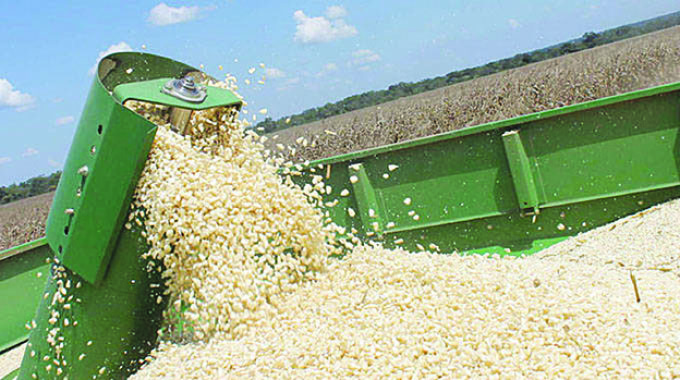Another bumper harvest beckons

Precious Manomano Herald Reporter
Grain reserves will be raised again and for the third straight year there will be no maize imports, amid high expectations of a bumper harvest from increased hectarages planted during the good rains of the 2022-23 summer cropping season.
This has been attributed to Government input schemes, timely inputs distribution, constant supply of key utilities such as power and fuel to farmers, good rains received in all provinces and crowding-in the private and financial services sectors as enunciated in the Agriculture Recovery Plan.
The Government has set in motion public and private sector engagements to actualise its projections of three million tonnes of maize for the current season, from a combined hectarage of 1 940 969 being planted.
This was rivalled only by the year 2010 when two million hectares were put under maize.
The present stress as maize harvests continue to grow is to push for productivity, the number of tonnes per hectare, rather than expand the area planted.
The bumper harvest improved the country’s growth in Gross Domestic Product, food security, national grain stock levels and as other crops joined maize and traditional grains with harvests exceeding local demand, decreased Zimbabwe’s import bill.
A major benefit of the rising harvests is the aspect of rural development, as farmer incomes grow across all sectors, including the millions of small-scale farmers.
The earnings from sales of surpluses is pumping money into the rural economy, as farmers spend their profits on a wide range of farming and consumer goods and services.
Agricultural experts suggest that even if some farmers were short of fertiliser and were hit by fall armyworm, crops remained in good condition and will give high yields.
Zimbabwe Indigenous Women Farmers Association Trust president Mrs Depinah Nkomo said this year farmers are likely to produce a bumper harvest in maize and other crops compared to last year, adding that the rainfall received was normal in most areas.
“I believe that this season we are going to produce the best results on our crops, especially maize,” she said. “Most farmers planted the majority of crops in early November and most of these crops matured well.
“Currently, we are starting to harvest these crops. We are likely to produce more this season compared to last year where most of it was affected by dry spell. We are looking forward to having better producer prices. Next month we will be delivering our grain to the Grain Marketing Board.”
Zimbabwe Commercial Farmers’ Union (ZCFU) president, Dr Shadreck Makombe, said there were chances of getting a bumper harvest because of good rains received so far, and the preparedness of farmers.
“The season is good following good rains that are received. We are sure of a bumper harvest this season,” he said.
Tobacco Farmers Union Trust vice president Mr Edward Dune said the future of maize production was great following the participation of private buyers.
“The future is bright if farmers continue to be paid in foreign currency,” he said. “We are optimistic that next year we can achieve the target if private players also come to partner the Government in farming.
“This is critical for our country because food security is an important part of our lives. We must stock up our reserves.”
The harvest from this year’s crop will not only produce enough to feed the country, but will also allow the rebuilding of carry-over reserves — ensuring sufficient supplies are available next season, even if the rainfall is inadequate.
Midlands province planted 469 408 hectares of maize, the highest among all the provinces.
In the past years, Mashonaland West province was the major contributor of agricultural produce due to its favourable weather patterns and good soils.
Mashonaland West this season planted 322 844ha compared to 324 159ha last year, while Manicaland has 272 874ha compared to 235 5441ha in the previous year.
The communal sector still contributes the largest area under maize, 62 percent, while the large-scale and A2 sectors contributed 8 percent, which is a two percent decrease from 10 percent in the last season.
Full story: www.herald.co.zw
Under traditional grains, farmers planted 180 661ha of pearl millet compared to 157 634 ha last year.
Finger millet planting stands at 33 208ha compared to 21 242ha last year, groundnuts is at 331 262ha compared to 261 758ha last year and bambara nuts jumped to 131 421ha compared to 120 203ha last year.
Farmers also planted 55 944ha of soyabean compared to 51 488ha last season and sorghum stood at 319 759ha compared to 344 882.
This season was characterised by an early onset of rains in most parts of the country, except Mashonaland provinces that had a late onset where the bulk of cereal crops were planted in November and December.
Zimbabwe requires 2,2 million tonnes of maize for human and livestock consumption and the expected three million tonnes target from this season will not only restore strategic reserves, but also open doors to some exports.
All farmers are guaranteed a market, with the Grain Marketing Board buying all grain on offer at set prices.











Comments